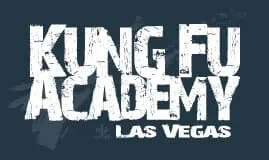Wing Chun
Let's get right to it.
If you have ever studied Wing Chun or martial arts, perhaps you've heard of something called the "centerline." But what is it, exactly? What is it important in Wing Chun, and does this concept have anything to teach us about combat more generally?
You'll often hear the centerline described as a vertical line drawn through an opponent's body. Human beings, and many other creatures in nature, are often roughly symmetrical: two arms, wings, or fins, two hands, two legs (or, if more, an equal number on each side of the body), and two eyes. The center line can therefore be described as a line that, seen from the front, divides the body in half.
However, there is also another, traditional definition of the centerline in Wing Chun: a centerline that exists between two opponents.
The Shared Centerline
- Definition: When two opponents face each other, there is an imaginary line that extends from one person's center to the other's. This is the shared centerline.
- Significance: This line is very important in Wing Chun because the quickest way to reach an opponent is in a straight line! Techniques in Wing Chun, from punches to kicks, often aim to travel directly along this line. Additionally, if you control this line, you can effectively neutralize an opponent's attacks and dominate their position.
The Five Centerlines of Wing Chun Kung Fu: Insights from Wan Kam Leung
Have you ever played chess? If you have, you might have heard of a common strategy: the opponent who controls the middle of the chess board often has a strategic advantage. This is because controlling the middle of the board makes it harder for an opponent to move their own pieces in response to your own. It also gives you more options to find gaps in your opponent's defenses.
Consider this…
In some ways, Wing Chun is similar. Controlling this "shared centerline" means placing oneself in a position of advantage. See Master Wan Kam Leung further break this concept down into not just one, but five different centerlines. Let's delve into these five and their significance.
Wing Chun
- Central Vertical Line (Zhong Xin Xian)
- Definition: This is the traditional centerline that runs vertically down the middle of the body, from the top of the head to between the feet. It is often the first centerline introduced to beginners.
- Significance: In the idea of a shared centerline, protecting one's own portion of this line is crucial, as it contains vital organs and points vulnerable to attack. Offensively, targeting an opponent's portion of this vertical line can be very effective.
- Upper Horizontal Line (Shang Heng Xian)
- Definition: This line runs horizontally across the upper chest area, roughly at shoulder level.
- Significance: Defending this line is crucial for guarding against hooks, roundhouse punches, and other high attacks. By doing this, a practitioner can effectively counter high-level threats.
- Middle Horizontal Line (Zhong Heng Xian)
- Definition: This line is positioned at the solar plexus level, running horizontally across the body.
- Significance: This is an important area to guard because strikes to the solar plexus, whether kicks or punches, can be debilitating. Many of Wing Chun's strikes, blocks, and parries are focused around defending or attacking this line.
- Lower Horizontal Line (Xia Heng Xian)
- Definition: This line runs horizontally across the lower abdomen area, roughly at the belt level.
- Significance: Strikes to this area can cause considerable pain and damage. Being aware of this line aids in defense against low punches and certain kicks.
- Ground Horizontal Line (Di Heng Xian)
- Definition: This is the horizontal line at which the feet are grounded.
- Significance: Balancing, rooting, and footwork are essential components of Wing Chun. By being attuned to the ground horizontal line, a practitioner can maintain a strong stance and move with agility.
Conclusion
Still a bit confusing? That's ok! Wing Chun is a complex art, and it takes lots of training and time to master. But even understanding conceptually what the centerline is can provide a big step up in one's own training.
Wing Chun's techniques are actually based, in large part, around these concepts of the centerline. The next time you practice, see if you can relate certain techniques to the centerline. If you're having trouble, ask your instructor. You may be surprised to find that other martial arts, as well, have techniques that include similar concepts.
While the "central vertical line" between two opponents remains pivotal, the four horizontal lines provide a good way of "breaking down" both defense and attack. Familiarizing yourself with these ideas allows students of Wing Chun to increase their awareness, positioning, and technique, taking their skills to the next level.
